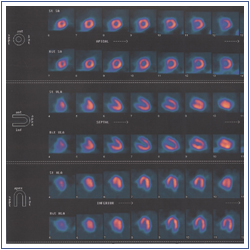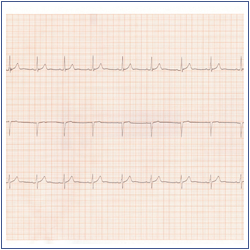About Diagnostic Testing
At Zepick Cardiology you form a team with the doctor to customize your treatment plan. This starts with talk between you and the doctor where you explain your health concern and the doctor asks a series of questions. Sometimes a diagnostic test helps determine what treatment is most effective for you.
- Nuclear Cardiology and Stress testing
- Electrocardiogram
- Cardiac and Vascular Ultrasound
- Heart Rhythm Monitors (Holters, King of Hearts)
- Cardiac and Peripheral Vascular CT
- Coronary Calcium Score
Nuclear Cardiology and Stress testing
Nuclear Cardiology
A nuclear heart scan is a type of medical test that allows your doctor to get important information about the health of your heart. During a nuclear heart scan, a safe, radioactive material called a tracer is injected through a vein into your bloodstream. The tracer then travels to your heart. The tracer releases energy, which special cameras outside of your body detect. The cameras use the energy to create pictures of different parts of your heart.
Stress testing
 A stress test helps show whether enough blood flows to your heart when it's working hard. Some heart problems are easier to diagnose when your heart is working hard and beating fast. Doctors usually use stress testing to help them diagnose coronary artery disease.
A stress test helps show whether enough blood flows to your heart when it's working hard. Some heart problems are easier to diagnose when your heart is working hard and beating fast. Doctors usually use stress testing to help them diagnose coronary artery disease.
During a stress test, you exercise or are given a medicine to make your heart work harder. Your heart is monitored using dime-sized electrodes attached to your chest. The electrodes sense the electrical signals that run your heart.
Your health status will always be closely monitored during a stress test, and you will not have to exercise more than you think you can handle. Stress tests are safe and have few side effects.
Stress testing and nuclear cardiology are usually done at the same time because it is easy to combine them and they are a powerful test to diagnose coronary disease.
TopElectrocardiogram
 An electrocardiogram, also called an EKG or ECG, is a simple test that detects and records the electrical activity of the heart. It is used to detect and locate the source of heart problems.
An electrocardiogram, also called an EKG or ECG, is a simple test that detects and records the electrical activity of the heart. It is used to detect and locate the source of heart problems.
Cardiac and Vascular Ultrasound
Echocardiography or "Echo" is a painless test that uses sound waves to create images of your heart. It provides your doctor with information about the size and shape of your heart and how well your heart's chambers and valves are working.
Vascular ultrasound uses ultrasound to create images of the arteries in your neck, arms, or legs. The carotid arteries supply your brain with blood, and other arteries supply the muscles in your arms or legs with fresh blood. Vascular Ultrasound can tell if those arteries are blocked with plaque.
Top
Heart Rhythm Monitors (Holters, King of Hearts)
Holter monitors and King of Hearts monitors record the rhythm of your heartbeat. A technician will attach electrodes to your chest. Holter monitors are worn for 24 hours, while a King of Hearts monitor is worn longer. You may be instructed to press a button if you are having symptoms.
TopCardiac and Peripheral Vascular CT
Cardiac computed tomography, or cardiac CT, is a painless test that uses an x-ray machine to take clear, highly detailed pictures of your heart or blood vessels.
Each picture that the machine takes shows a small slice of the heart. A computer will put the pictures together to make a large picture of the whole heart. Sometimes an iodine-based dye is injected into one of your veins during the scan to help highlight blood vessels and arteries on the x-ray images


Coronary Calcium Score
 A coronary calcium score is a test that can show weather you have coronary or heart artery disease. The calcium score looks for specks of calcium in the walls of the coronary arteries. This test can show if you are at higher risk for heart disease before other signs or symptoms occur and may be the earliest predictor for coronary artery disease.
A coronary calcium score is a test that can show weather you have coronary or heart artery disease. The calcium score looks for specks of calcium in the walls of the coronary arteries. This test can show if you are at higher risk for heart disease before other signs or symptoms occur and may be the earliest predictor for coronary artery disease.
A coronary calcium score is easy for the patient, who lies quietly on a table for about 5 to 10 minutes. The results of the test are easy to understand. The calcium score is a number between zero and two thousand. Anyone with a score over 1,000 is at high risk for a heart attack or other serious symptoms of coronary artery disease.
"This page has been adapted from the national heart lung and blood institute."
Top



